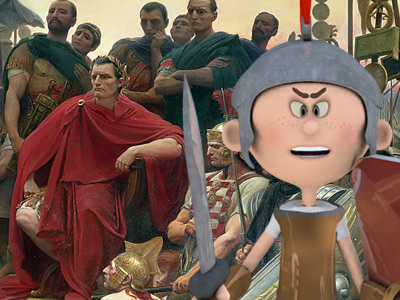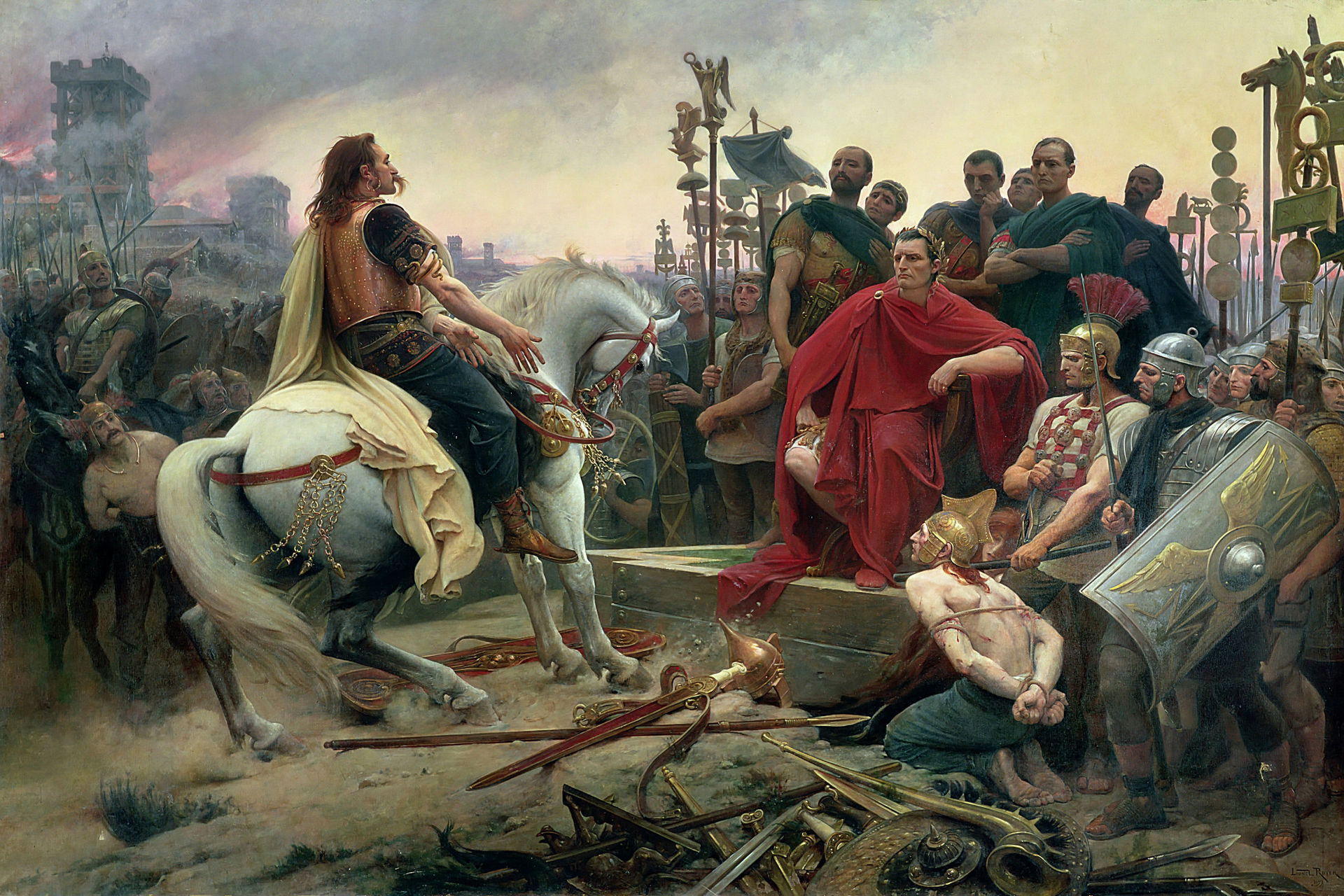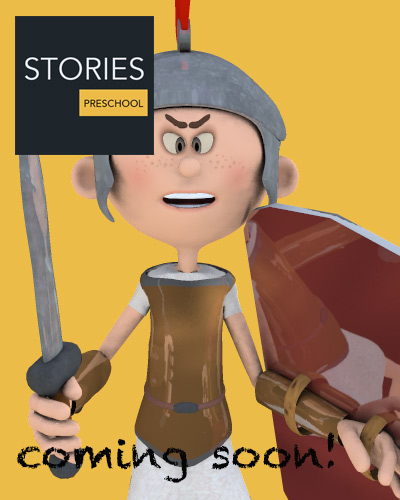Gallic Wars (58–50 BC)
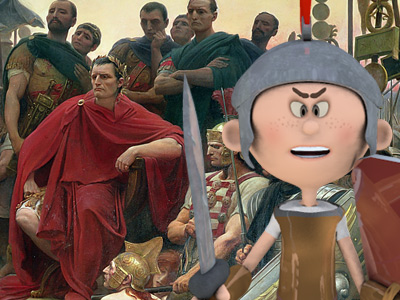
Political Background
As a result of the financial burdens of his consulship in 59 BC, Caesar incurred significant debt. However, through his membership in the First Triumvirate—the political alliance which comprised Marcus Licinius Crassus, and Pompey, and himself— Caesar had secured the proconsulship of two provinces, Cisalpine Gaul and Illyricum. When the Governor of Transalpine Gaul, Metellus Celer, died unexpectedly, this province was also awarded to Caesar. Caesar's governorships were extended to a five-year period, a new idea at the time.
Caesar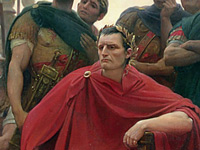 Julius Caesar (100-44 BC), was a Roman politician and general who played a critical role in the events that led to the demise of the Roman Republic and the rise of the Roman Empire. Caesar is considered by many historians to be one of the greatest military commanders in history. Julius Caesar » had initially four veteran legions under his direct command: Legio VII, Legio VIII, Legio IX Hispana, and Legio X. As he had been Governor of Hispania Ulterior in 61 BC and had campaigned successfully with them against the Lusitanians, Caesar knew personally most (perhaps even all) of these legions. Caesar also had the legal authority to levy additional legions and auxiliary units as he saw fit.
Julius Caesar (100-44 BC), was a Roman politician and general who played a critical role in the events that led to the demise of the Roman Republic and the rise of the Roman Empire. Caesar is considered by many historians to be one of the greatest military commanders in history. Julius Caesar » had initially four veteran legions under his direct command: Legio VII, Legio VIII, Legio IX Hispana, and Legio X. As he had been Governor of Hispania Ulterior in 61 BC and had campaigned successfully with them against the Lusitanians, Caesar knew personally most (perhaps even all) of these legions. Caesar also had the legal authority to levy additional legions and auxiliary units as he saw fit.
His ambition was to conquer and plunder some territories to get himself out of debt, and it is possible that Gaul was not his initial target. It is more likely that he was planning a campaign against the Kingdom of Dacia, located in the Balkans.
The countries of Gaul were civilized and wealthy. Most had contact with Roman merchants and some, particularly those that were governed by republics such as the Aedui and Helvetii, had enjoyed stable political alliances with Rome in the past.
The Romans The Roman Republic was a form of government of Rome and the era of the classical Roman civilization when it was run through public representation of the Roman people. Beginning with the overthrow of the Roman Kingdom (traditionally dated to 509 BC) and ending in 27 BC with the establishment of the Roman Empire, Rome's control rapidly expanded during this period - from the city's immediate surroundings to hegemony over the entire Mediterranean world. respected and feared the Gallic tribes. Only fifty years before, in 109 BC, Italy had been invaded from the north and saved only after several bloody and costly battles by Gaius Marius. Around 62 BC, when a Roman client state, the Arverni, conspired with the Sequani and the Suebi nations east of the Rhine, to attack the Aedui, a strong Roman ally, Rome turned a blind eye. The Sequani and Arverni sought Ariovistus’ aid and defeated the Aedui in 63 BC at the Battle of Magetobriga. The Sequani rewarded Ariovistus with land following his victory. Ariovistus settled the land with 120,000 of his people. When 24,000 Harudes joined his cause, Ariovistus demanded that the Sequani give him more land to accommodate the Harudes people. This demand concerned Rome because if the Sequani conceded, Ariovistus would be in a position to take all of the Sequani land and attack the rest of Gaul. They did not appear to be concerned about a conflict between non-client, client and allied states. By the end of the campaign, the non-client Suebi under the leadership of the belligerent Ariovistus, stood triumphant over both the Aedui and their coconspirators. Fearing another mass migration akin to the devastating Cimbrian War, Rome, now keenly invested in the defense of Gaul, was irrevocably drawn into war.
The Roman Republic was a form of government of Rome and the era of the classical Roman civilization when it was run through public representation of the Roman people. Beginning with the overthrow of the Roman Kingdom (traditionally dated to 509 BC) and ending in 27 BC with the establishment of the Roman Empire, Rome's control rapidly expanded during this period - from the city's immediate surroundings to hegemony over the entire Mediterranean world. respected and feared the Gallic tribes. Only fifty years before, in 109 BC, Italy had been invaded from the north and saved only after several bloody and costly battles by Gaius Marius. Around 62 BC, when a Roman client state, the Arverni, conspired with the Sequani and the Suebi nations east of the Rhine, to attack the Aedui, a strong Roman ally, Rome turned a blind eye. The Sequani and Arverni sought Ariovistus’ aid and defeated the Aedui in 63 BC at the Battle of Magetobriga. The Sequani rewarded Ariovistus with land following his victory. Ariovistus settled the land with 120,000 of his people. When 24,000 Harudes joined his cause, Ariovistus demanded that the Sequani give him more land to accommodate the Harudes people. This demand concerned Rome because if the Sequani conceded, Ariovistus would be in a position to take all of the Sequani land and attack the rest of Gaul. They did not appear to be concerned about a conflict between non-client, client and allied states. By the end of the campaign, the non-client Suebi under the leadership of the belligerent Ariovistus, stood triumphant over both the Aedui and their coconspirators. Fearing another mass migration akin to the devastating Cimbrian War, Rome, now keenly invested in the defense of Gaul, was irrevocably drawn into war.
HISTORY
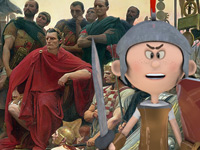
RESOURCES
This article uses material from the Wikipedia article "Gallic Wars", which is released under the Creative Commons Attribution-Share-Alike License 3.0.
© Stories Preschool. All Rights Reserved.
